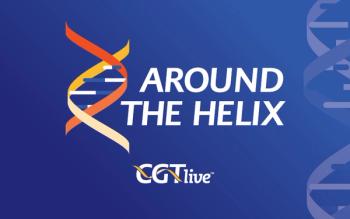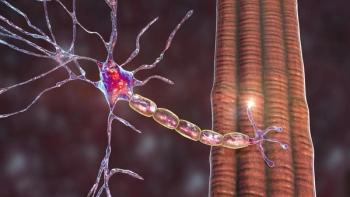
The Role of Gene Therapy for Patients with Duchenne Muscular Dystrophy
Jeffrey Chamberlain, PhD, McCaw Endowed Chair of Muscular Dystrophy at University of Washington, discussed how gene therapy shows promise for DMD treatment.
Sarepta Therapeutics' delandistrogene moxeparvovec-rokl (Elevidys), an adeno-associated virus (AAV) vector-based gene therapy for Duchenne muscular dystrophy (DMD), became the first gene therapy product to be approved by the FDA for a muscular dystrophy indication in 2023. Since then, it has begun to impact the standard practice of care for the disease.
In an interview with CGTLive®'s sister site, NeurologyLive®, Jeffrey Chamberlain, PhD, Professor of Neurology and Medical Genetics and McCaw Endowed Chair for Muscular Dystrophy at the University of Washington, spoke about the role of gene therapy in treating muscular dystrophies. He went over the development of the modality in muscular dystrophy, and zeroed in on the need to address challenges with treating older patients with more established disease.
CGTLive: In your view, what is the role of gene therapy for patients with muscular dystrophy?
Jeffrey Chamberlain, PhD: Gene therapy, I think, has tremendous potential because it's a way to restore the expression of this missing dystrophin protein. As I mentioned earlier, what we've seen in particular from the study of a number of Becker muscular dystrophy patients that have lower than normal levels of dystrophin, the idea arises that if you could restore levels of dystrophin up to 15%, maybe even a little higher, through a gene therapy approach, that could have really a tremendous impact on the progression of the disease. Now, gene therapy has been under development for more than 30 years in my lab and many others around the world. It's progressed, unfortunately, somewhat slowly from initial studies in mice onto larger animals, and now it's been in the clinic for the last 7 or 8 years, and we now have the first FDA-approved gene therapy, Elevidys, that's out there.
These original gene therapies by the way are not able to at this point replace the full size dystrophin protein. That relates to the delivery vehicle. The only way we know to deliver genes to all of the muscles in the body is through the use of these so-called AAV delivery shuttles. These AAV shuttles are able to transport new genes into the muscles all over the body. The one limitation, though, is that the AAV delivery vehicle has a very small carrying capacity. The amount of cargo it can deliver is quite small, and the most of the dystrophin protein (the genetic material to encode that) that you can pack into one of these AAV particles is only about 1/3 of the protein, so you're delivering a very small protein. Now, when these these therapies were being developed particularly in the mouse models over many years, that was sufficient to have a profound impact on the disease. Many studies from groups all over the world have shown that if you're able to replace these so-called microdystrophins into muscles of very young animals, you can essentially prevent the development of dystrophy. However, something that's been a little overlooked in the literature over many years, is that when you go into older animal models that already have a fairly advanced dystrophic state, you see 2 things: One, the efficiency of the delivery starts going down a little bit, and the overall functional impact of delivering these microdystrophins goes down. There still is a clear impact, though. And so now, I think what we're seeing is what happens now delivering these microdystrophins to kids with DMD. And you know, it's still a little hard to tell what's happening in all the many of the kids that have been seen, there's only been a couple of publications that have clearly described the outcome of some of these kids. I think, in general, what we're tending to see is somewhat similar things in that the younger the patient, probably the greater the impact that you're going to see. Certainly, the efficiency of delivery may be a little better. How well it works in the older boys is a little unclear. Approval to treat older boys only came in the last year, and there hasn't been a lot of data released on how well they're doing. But I think there's a general assumption out there that these microdystrophins, particularly if you can deliver enough of them, can have an important impact in slowing down the progression of the disease, if not stabilizing the patient for a number of years. I think we still need a little more data on that.
But there are challenges out there, and some of those challenges I think are that a lot of people feel that maybe the level of gene delivery that one is seeing in the clinic is not as robust as what we saw in some of the animal models. So everyone's hoping to find ways to deliver a little more of these microdystrophins. Sort of the more the merrier. And as this delivery progresses, it's going to be important over time to see over a many year period, relative impacts in terms of slowing the disease, versus halting further progression, versus bringing back more strength—how that varies with the age of the patient and with the overall amount of this microdystrophin that is delivered to those kids. So there's a lot of potential out there, but there's still a lot of questions that remain.
This transcript has been edited for clarity.
Newsletter
Stay at the forefront of cutting-edge science with CGT—your direct line to expert insights, breakthrough data, and real-time coverage of the latest advancements in cell and gene therapy.











































